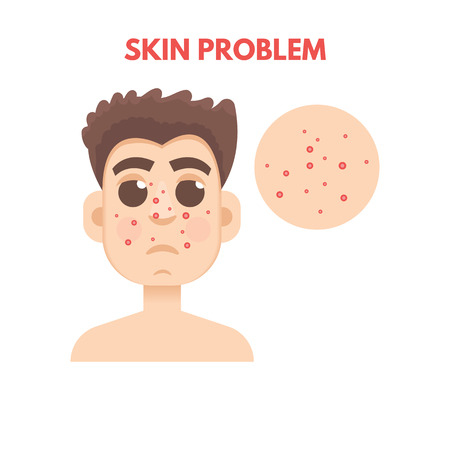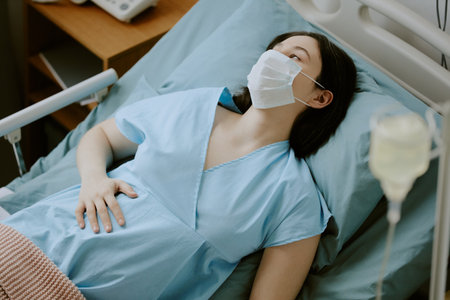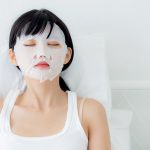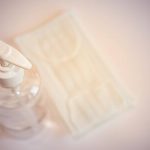1. Follow Your Provider’s Post-Procedure Instructions
Every cosmetic procedure comes with specific aftercare guidelines, and its essential to follow them closely. Your provider knows exactly what your skin needs during the healing process. Whether you’ve had Botox, laser treatment, chemical peel, or fillers, proper aftercare plays a big role in getting the best results and avoiding unwanted side effects.
Why Following Instructions Matters
Your provider gives you personalized advice based on the treatment you received and your skin type. Ignoring these instructions might lead to prolonged redness, swelling, infection, or even poor results. Think of it this way: the procedure is just the first step — how you care for your skin afterward determines how well it heals.
Common Aftercare Tips by Procedure Type
| Treatment Type | Typical Aftercare Instructions |
|---|---|
| Chemical Peel | Avoid sun exposure, use gentle cleansers, apply moisturizer regularly |
| Laser Treatment | Use cool compresses, avoid heat (hot showers/saunas), apply healing ointments as directed |
| Botox or Fillers | No rubbing or massaging the treated area, avoid lying down for 4 hours post-injection, skip strenuous exercise for 24 hours |
| Microneedling | Keep skin hydrated, avoid makeup for at least 24 hours, stay out of direct sunlight |
Ask Questions if Youre Unsure
If anything is unclear or if you experience unexpected symptoms like severe pain or unusual swelling, don’t hesitate to reach out to your provider. Its better to ask than to guess when it comes to your skins recovery.
Pro Tip:
Write down or take a photo of the aftercare instructions before leaving the clinic. That way, youll always have them handy at home.
Remember:
Your provider’s guidance is there to protect your investment in your appearance and health. Following their directions is key to seeing smooth, beautiful results from any cosmetic procedure.
2. Keep Your Skin Hydrated and Protected
Proper hydration is one of the most important steps in helping your skin heal after a cosmetic procedure. When your skin is well-hydrated, it can repair itself more efficiently and maintain a healthy barrier against irritants. Here’s how you can keep your skin both hydrated and protected during recovery.
Stay Hydrated from the Inside Out
Drinking enough water each day helps your body flush out toxins and keeps your skin plump and elastic. Aim for at least 8 glasses of water daily, or more if your doctor recommends it. You might even consider adding electrolyte-rich drinks if youre feeling dehydrated.
Use Recommended Moisturizers
Your provider will likely suggest specific moisturizers that are gentle and effective for post-procedure skin. These products help lock in moisture and soothe irritated or sensitive areas. Avoid using heavy creams or products with fragrances unless advised by your specialist.
Types of Moisturizers to Consider:
| Type | Benefit |
|---|---|
| Ceramide-based creams | Restore the skin barrier |
| Hyaluronic acid serums | Deep hydration without heaviness |
| Aloe vera gel | Calms redness and irritation |
Protect Your Skin from the Sun
Your skin will be extra sensitive to UV rays after a procedure. Exposure to the sun can cause discoloration, slow healing, and even lead to long-term damage. Always apply a broad-spectrum sunscreen with at least SPF 30 when going outdoors—even on cloudy days.
Sunscreen Tips:
- Choose mineral sunscreens with zinc oxide or titanium dioxide for less irritation.
- Reapply every 2 hours if youre outside.
- Wear a wide-brimmed hat and sunglasses for extra protection.
Avoid Harsh Products
This is not the time to experiment with new skincare items. Stay away from exfoliants, retinoids, or alcohol-based toners until your provider gives you the green light. Using harsh products too soon can delay healing and cause unnecessary discomfort.

3. Be Gentle with Your Skin
After a cosmetic procedure, your skin is in a delicate state and needs time to recover. It’s important to treat it with extra care to avoid irritation or complications. Being gentle doesn’t just mean using soft products—it also means changing some everyday habits that could harm your healing skin.
Avoid Excessive Touching
Try to keep your hands off the treated area as much as possible. Our hands carry oils and bacteria that can cause breakouts or infections, especially on sensitive post-procedure skin. If you must touch your face—for example, when applying skincare—make sure your hands are freshly washed.
Skip the Scrubs
Exfoliating products like scrubs, brushes, or chemical exfoliants can be too harsh for healing skin. These can slow down recovery, cause redness, or even damage the skin barrier. Stick to gentle cleansing with lukewarm water and a mild, fragrance-free cleanser until your provider gives you the green light.
Say No to Abrasive Products
Products containing retinol, alcohol, acids (like glycolic or salicylic), or strong fragrances should be avoided unless specifically approved by your provider. These ingredients may irritate sensitive skin and delay healing.
Recommended vs. Avoid Products Table
| Recommended Products | Products to Avoid |
|---|---|
| Gentle, fragrance-free cleansers | Exfoliating scrubs or brushes |
| Moisturizers with ceramides or hyaluronic acid | Retinoids and acids (AHA/BHA) |
| Mild sunscreen (physical/mineral-based) | Alcohol-based toners or serums |
Let Your Skin Heal Naturally
Your body knows how to heal itself—give it the time and space it needs. Don’t pick at peeling skin or scabs; this can lead to scarring or infection. Trust the process and follow your provider’s instructions carefully.
Tip:
If you’re unsure whether a product is safe to use post-procedure, reach out to your skincare professional before applying anything new.
4. Watch for Signs of Infection or Complications
After a cosmetic procedure, its completely normal to experience some redness, swelling, or mild discomfort as part of the healing process. However, its important to stay alert and know the difference between normal recovery signs and symptoms that could signal a problem.
What’s Normal vs. What’s Not
| Normal Healing Symptoms | Potential Warning Signs |
|---|---|
| Mild swelling that improves over time | Swelling that worsens or doesn’t go down after several days |
| Redness around the treatment area that fades gradually | Spreading redness or red streaks around the area |
| Slight tenderness or sensitivity | Sharp pain or increasing discomfort |
| Minimal clear fluid drainage (if any) | Yellow, green, or foul-smelling discharge |
| No fever or slight temperature change | Fever over 100.4°F (38°C) |
When to Contact Your Provider
If you notice anything unusual—especially signs like persistent redness, swelling that gets worse instead of better, or any kind of pus or oozing—it’s best not to wait it out. Reach out to your cosmetic provider right away. They can determine whether what youre experiencing is a normal part of healing or something that needs medical attention.
Helpful Tip:
Keep a daily photo log of the treated area so you can track changes and easily spot anything abnormal.
Your Health Comes First
Your skin is your body’s largest organ, and it deserves close care—especially after a cosmetic procedure. Monitoring your recovery helps ensure great results and prevents complications from becoming serious issues.
5. Maintain a Healthy Lifestyle to Support Healing
Taking care of your body is just as important as taking care of your skin after a cosmetic procedure. A healthy lifestyle can make a big difference in how well and how quickly you heal. Here are some key areas to focus on:
A Balanced Diet
Your body needs proper nutrition to repair itself. Eating foods rich in vitamins, minerals, and antioxidants will help your skin recover faster and look better in the long run. Focus on whole foods like fruits, vegetables, lean proteins, and whole grains.
| Food Group | Examples | Benefits for Skin Healing |
|---|---|---|
| Fruits & Vegetables | Berries, spinach, sweet potatoes | Rich in antioxidants that reduce inflammation |
| Lean Proteins | Chicken, tofu, eggs | Support tissue repair and collagen production |
| Whole Grains | Brown rice, quinoa, oats | Sustain energy levels and provide essential nutrients |
| Healthy Fats | Avocados, nuts, olive oil | Aid in skin regeneration and hydration |
Adequate Rest
Your body heals while you sleep. Getting at least 7–9 hours of quality sleep each night gives your skin time to regenerate. Try to stick to a regular sleep schedule and create a relaxing nighttime routine to improve sleep quality.
Avoid Smoking and Alcohol
Cigarettes and alcohol can slow down your healing process. Smoking reduces blood flow and oxygen delivery to the skin, which can delay recovery and increase the risk of complications. Alcohol dehydrates the skin and may interfere with medications or treatments prescribed post-procedure. Steering clear of both—at least during your recovery period—is one of the best things you can do for your skin.
The Bottom Line on Lifestyle Choices
Your daily habits play a huge role in how well your skin heals after a cosmetic treatment. By eating well, resting enough, and avoiding harmful substances like tobacco and alcohol, you’re giving your body the best chance to recover smoothly and maintain those beautiful results longer.


